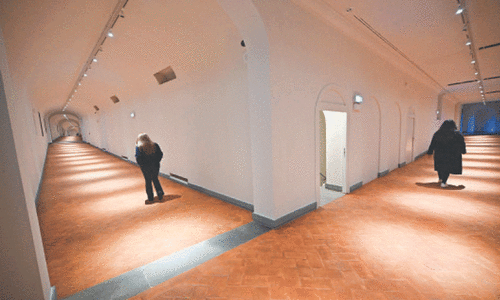PARIS: Humanity is falling further behind in the race against climate change, with the gap between greenhouse gas emissions and levels needed to achieve the Paris climate treaty temperature goals continuing to widen, the UN said on Tuesday.
With only a single degree Celsius of warming so far, the world has seen a crescendo of deadly wildfires, heatwaves and hurricanes.
On current trends, temperatures are on track to rise roughly 4°C by the century’s end, a scenario that would tear at the fabric of civilisation, scientists say.
To cap global warming at two degrees Celsius, national carbon-cutting pledges annexed to the 2015 Paris Agreement must collectively triple by 2030, according to the UN Environment Programme’s (UNEP) Emissions Gap report.
To hold the rise in Earth’s temperature to 1.5°C above the pre-industrial benchmark, such efforts would have to increase fivefold.
“The emissions gap is much bigger than last year,” said UNEP’s Philip Drost, one of several coordinators for the annual report’s ninth edition.
One obvious reason was a spike last year in the quantity of carbon dioxide, methane and other planet-warming gases escaping into the atmosphere.
This trend is set to continue in 2018, which saw a jump in CO2 emissions from the energy sector, according to the International Energy Agency, as well as an increase in the atmospheric concentration of CO2.
But the gap between where we are and where we need to be also grew on paper: new calculations by the UN’s top science panel sharply reduce the real-world potential for drawing CO2 out of the air, whether by planting more trees or capturing and storing CO2 emitted by power plants.
More broadly, the Intergovernmental Panel on Climate Change (IPCC) special report released last month concluded that 2°C of warming — once seen as a safety guardrail — would in fact usher in a maelstrom of deadly extreme weather.
Taken together, rising emissions and revised projections on CO2 removal have widened the emissions gap by 15 per cent for a 2°C world, and by nearly 70 per cent for the 1.5°C target, according to the new report.
The news comes despite breakneck growth in solar and wind power, gains in energy efficiency, and climate action by business and local governments, said Andrew Steer, president and CEO of the Washington DC-based World Resources Institute.
“We are chasing a bus” — climate change — “and we are going faster and faster, setting new world records,” he said by phone.
“But the bus is accelerating even faster, and the gap is increasing.”
Written and reviewed by 100 climate scientists and experts, the annual, 100-page analysis tracks progress towards achieving the Paris treaty goals.
Trump rejects key conclusion of US govt climate report
US President Donald Trump has rejected a central conclusion of a dire report on the economic costs of climate change released by his own administration, but economists said the warning of hundreds of billions of dollars a year in global warming costs is pretty much on the money.
Just look at last year with Hurricanes Harvey, Maria and Irma, they said. Those three 2017 storms caused at least $265 billion in damage, according to the National Oceanic and Atmospheric Administration.
The National Climate Assessment report, quietly unveiled on Friday, warned that natural disasters are worsening in the United States because of global warming.
It said warming-charged extremes “have already become more frequent, intense, widespread or of long duration”.
The report noted the last few years have smashed US records for damaging weather, costing nearly $400 billion since 2015.
The president said he read some of the report “and it’s fine” but not the part about the devastating economic impact.
“I don’t believe it,” Trump said, adding that if “every other place on Earth is dirty, that’s not so good.”
Earlier, the White House had played down the report.
Spokeswoman Lindsay Walters said in an emailed statement that the report “is largely based on the most extreme scenario, which contradicts long-established trends by assuming that, despite strong economic growth that would increase greenhouse gas emissions, there would be limited technology and innovation, and a rapidly expanding population”.
Published in Dawn, November 28th, 2018















































Dear visitor, the comments section is undergoing an overhaul and will return soon.